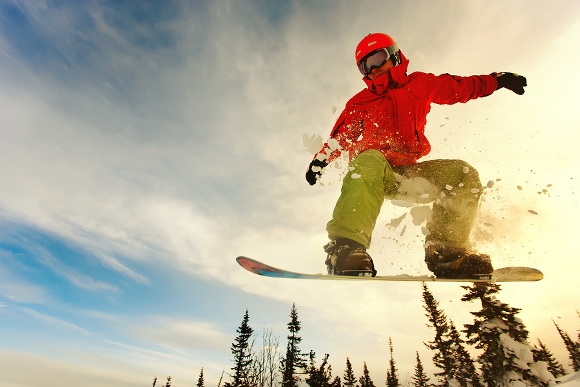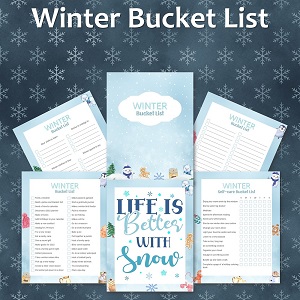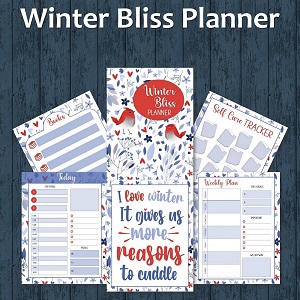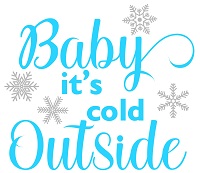Snowboarding is a fun sport to undertake but it has its risks that you need to be aware of. Nothing would suck more that returning from a snowboarding trip with a broken leg or sprained wrist. There are a number of broad safety measures you can follow to diminish your danger of a snowboarding injury that we will discuss.
Make sure you’re in shape to ski. Organize for your winter sports trip with a training programmed to progress core stability and muscle. Endurance and leg strength is predominantly vital to lend a hand in preventing injuries.
Wear suitable layers of clothing, that don’t confine your movement. You do not want to be all bulked up and unable to move freely. If you cannot move then you cannot snowboard properly and the entire thrill aspect is gone.
Just like any other sporting activity, warm up and cool down. Before you hit the slopes take some time warming up and stretching to help train your body for action.
The top injury that a majority of the snowboarders receive is a wrist injury. Falls are more frequent during snowboarding. The natural response to a fall is to stretch out a hand to break the fall, and falls tend to occur more often in beginners.
For this reason Colles fractures Scaphoid and fractures of the wrist are a relatively common feature, with around 100,000 wrist fractures worldwide among snowboarders each year. Snowboarders should wear wrist guards as they significantly reduce the incidence of wrist injuries during falls.
Another common injury is head injuries which can lead to serious conclusions. Helmets are effective in reducing the incidence of minor concussions during low velocity collisions. Be sure to grab both of these when you do your shopping for snowboarding.
You may think this will save you money, but in the end it may cost u thousands in hospital bills. Don’t borrow equipment from friends; it significantly increases your risk of injury. If you are hiring equipment make sure you hire from a recommended store. Ensure that all the equipment fits properly. This will help avoid serious injuries and unnecessary falls due to non fitting equipment.
Another good tip is Use ‘multi-mode’ release bindings if possible. The superior release available in modern bindings is just one factor that has helped prevent injuries. Rear release boots can significantly reduce the risk of ACL injury.
Self-test your bindings every day. Self testing of bindings is simple. Step into the binding and then twist to the side to release the toe-piece under the control mechanism. The heel can be tested by stepping into the binding and leaning forward, to release the heel-piece. Both the toe and heel should be able to release if properly adjusted.
The Final Suggestion is to follow the FIS Rules for Conduct in Winter Sports.
1 – Respect for Others
A skier or snowboarder must behave in such a way that he does not endanger or prejudice others.
2 – Control of Speed and Skiing or Snowboarding
A skier or snowboarder must move in control. He must adapt his speed and manner of skiing or snowboarding to his personal ability and to the prevailing conditions of terrain, snow and weather as well as to the density of traffic.
3 – Choice of Route
A skier or snowboarder coming from behind must choose his route in such a way that he does not endanger skiers or snowboarders ahead.
4 – Overtaking
A skier or snowboarder may overtake another skier or snowboarder above or below and to the right or to the left provided that he leaves enough space for the overtaken skier or snowboarder to make any voluntary or involuntary movement.
5 – Entering, Starting and Moving Upwards
A skier or snowboarder entering a marked run, starting again after stopping or moving upwards on the slopes must look up and down the slopes that he can do so without endangering himself or others.
6 – Stopping on the Piste
Unless it is absolutely necessary, a skier or snowboarder must avoid stopping on the piste in narrow places or where visibility is restricted. After a fall in such a place, a skier or snowboarder must move clear of the piste as soon as possible.
7 – Climbing and Descending on Foot
A skier or snowboarder either climbing or descending on foot must keep to the side of the piste.
8 – Respect for Signs and Markings
A skier or snowboarder must respect all signs and markings.
9 – Assistance
At accidents, every skier or snowboarder is duty bound to assist.
10 – Identification
Every skier or snowboarder and witness, whether a responsible party or not, must exchange names and addresses following an accident.
With all these tips that have been shared with you, I hope you learned something and will have a very safe trip. Come home in one piece and start planning the next.






